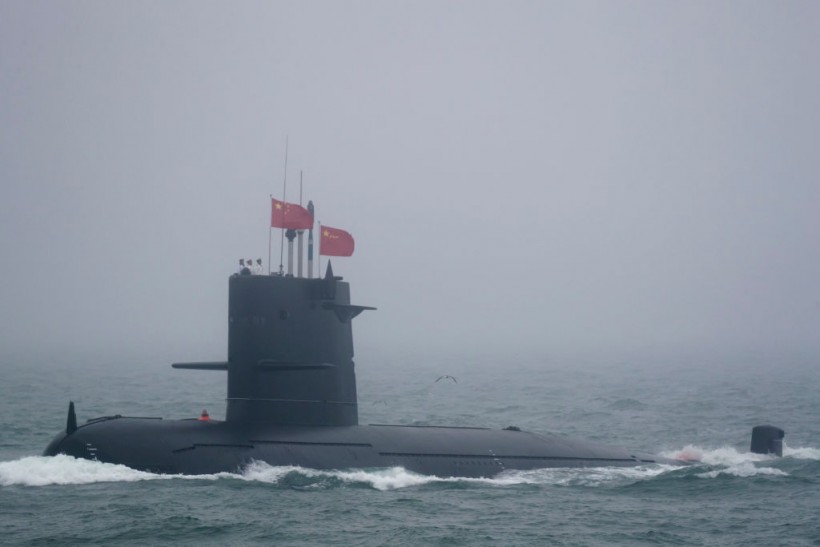
(Photo: MARK SCHIEFELBEIN/AFP via Getty Images) A Great Wall 236 submarine of the Chinese People's Liberation Army (PLA) Navy, billed by Chinese state media as a new type of conventional submarine, participates in a naval parade to commemorate the 70th anniversary of the founding of China's PLA Navy in the sea near Qingdao, in eastern China's Shandong province on April 23, 2019.
The production of a new generation of nuclear-armed submarines by China is likely to test rising U.S. and international efforts to track them for the first time, escalating the submarine arms race.
According to analysts and regional defense attaches, there is growing evidence that China will be able to operate its Type 096 ballistic missile submarine by the end of the decade thanks in part to technological advances from Russia.
During a conference in May in the U.S., research was discussed, as reported by Reuters.
New Vessels are Harder to Monitor
The new vessels will be far more difficult to monitor, according to research conducted by the China Maritime Studies Institute of the Naval War College and released in August. The opinions of seven analysts and three military attachés based in Asia support that judgment.
One of the main reasons for the U.S.'s expanded deployments and contingency preparation by the US Navy and other armed forces in the Indo-Pacific region is the covert effort to follow China's nuclear-powered and -armed ballistic missile submarines, known as SSBNs. When Type 096s are put into service, that drive is anticipated to intensify.
The Pentagon reported in November that the Chinese navy regularly conducts fully armed nuclear deterrence patrols from its older Type 094 boats out of Hainan Island in the South China Sea, simulating patrols conducted for years by the United States, Britain, Russia, and France.
However, the Type 094s are thought to be relatively noisy, which is a big disadvantage for military submarines as they are equipped with China's most sophisticated submarine-launched JL-3 missiles.
In terms of stealth, sensors, and armaments, the Type 096 submarine will be comparable to modern Russian submarines, according to the study. It stated that the U.S. and its partners in the Indo-Pacific will be affected by the capability jump in "profound" ways.
The report examines more than 50 years of the People's Liberation Army (PLA) navy's frequently glacial nuclear submarine development and is based in part on Chinese military periodicals, internal speeches by senior PLA leaders, and patent data.
Read also: Taiwan Unveils First Homegrown Submarine in Defense Milestone To Bolster Defense Against China
A Lot Bigger Than the Type 094?
It includes satellite images of the pressure hull construction for a big submarine obtained in November at China's brand-new Huludao shipyard. As indicated in the Pentagon's yearly briefings on China's military, this puts the building on track to have the boats operational by 2030.
The study also describes potential innovations based on "imitative innovation" of Russian technology, such as pump-jet propulsion and interior quieting systems.
The ship is probably going to be a lot bigger than the Type 094, which will enable it to have an inside "raft" built on intricate rubber supports to quieten other sounds, comparable to Russian designs.
Related article: US Reconstructs Cold War Submarine Program as China Bolsters Navy








